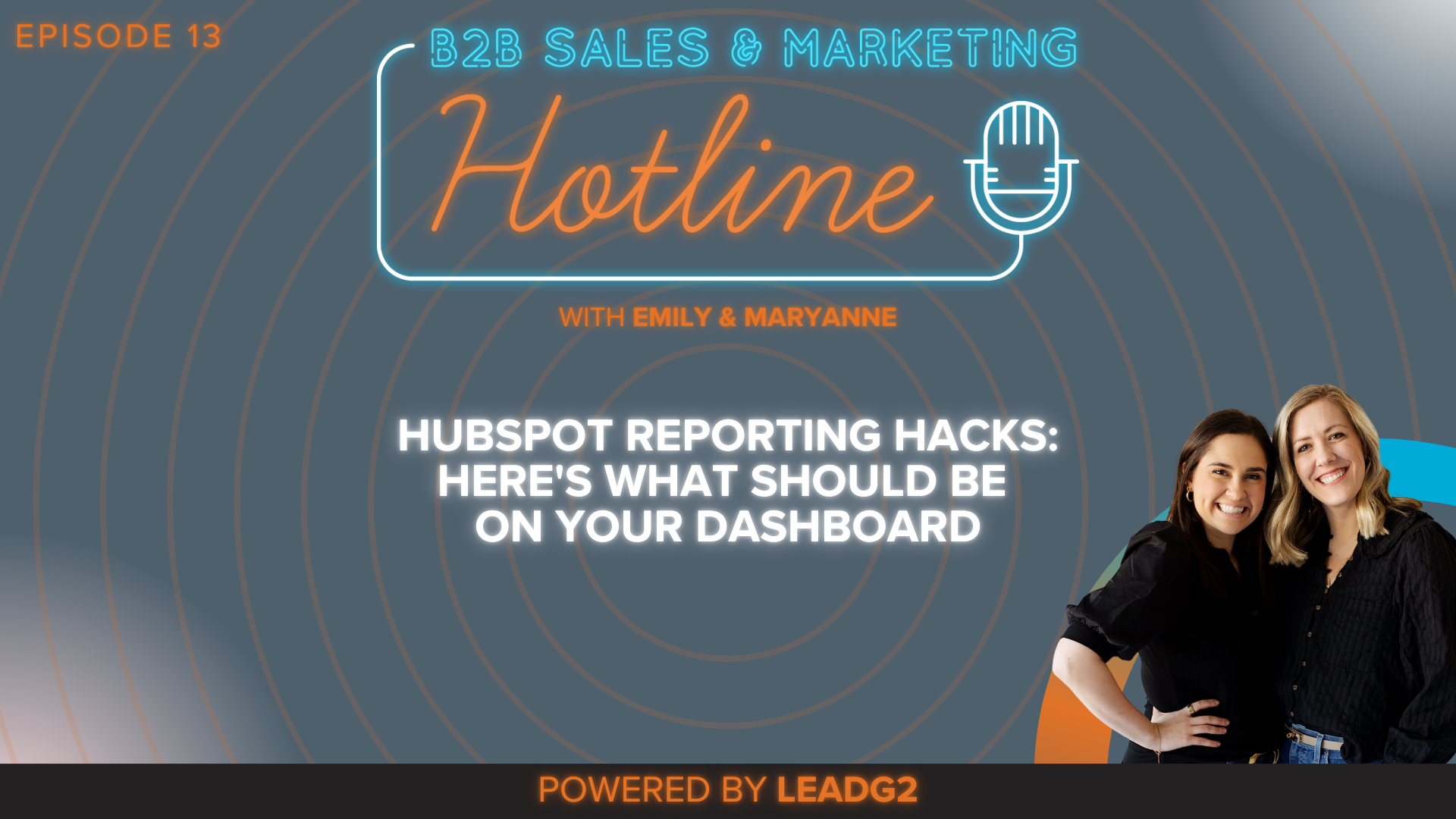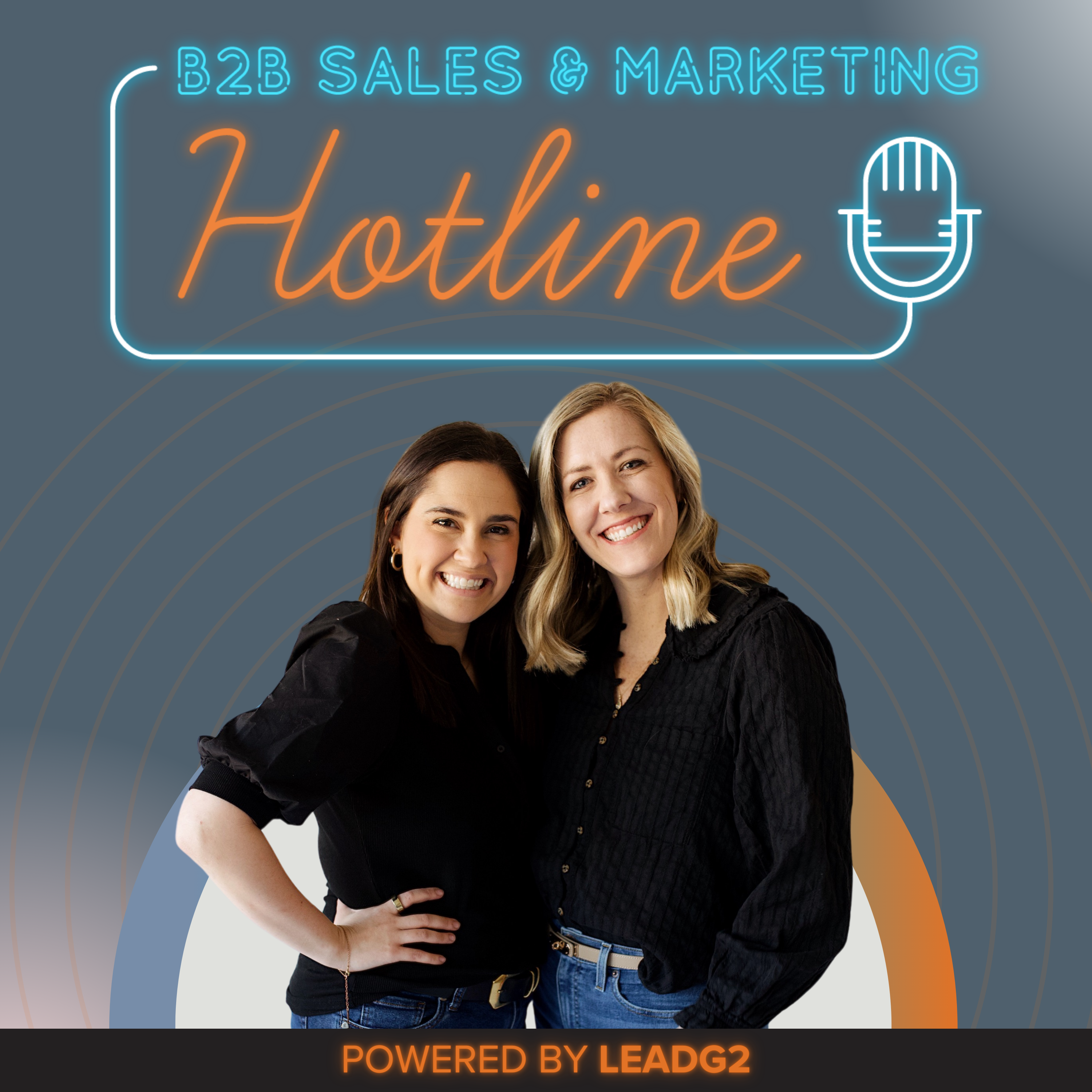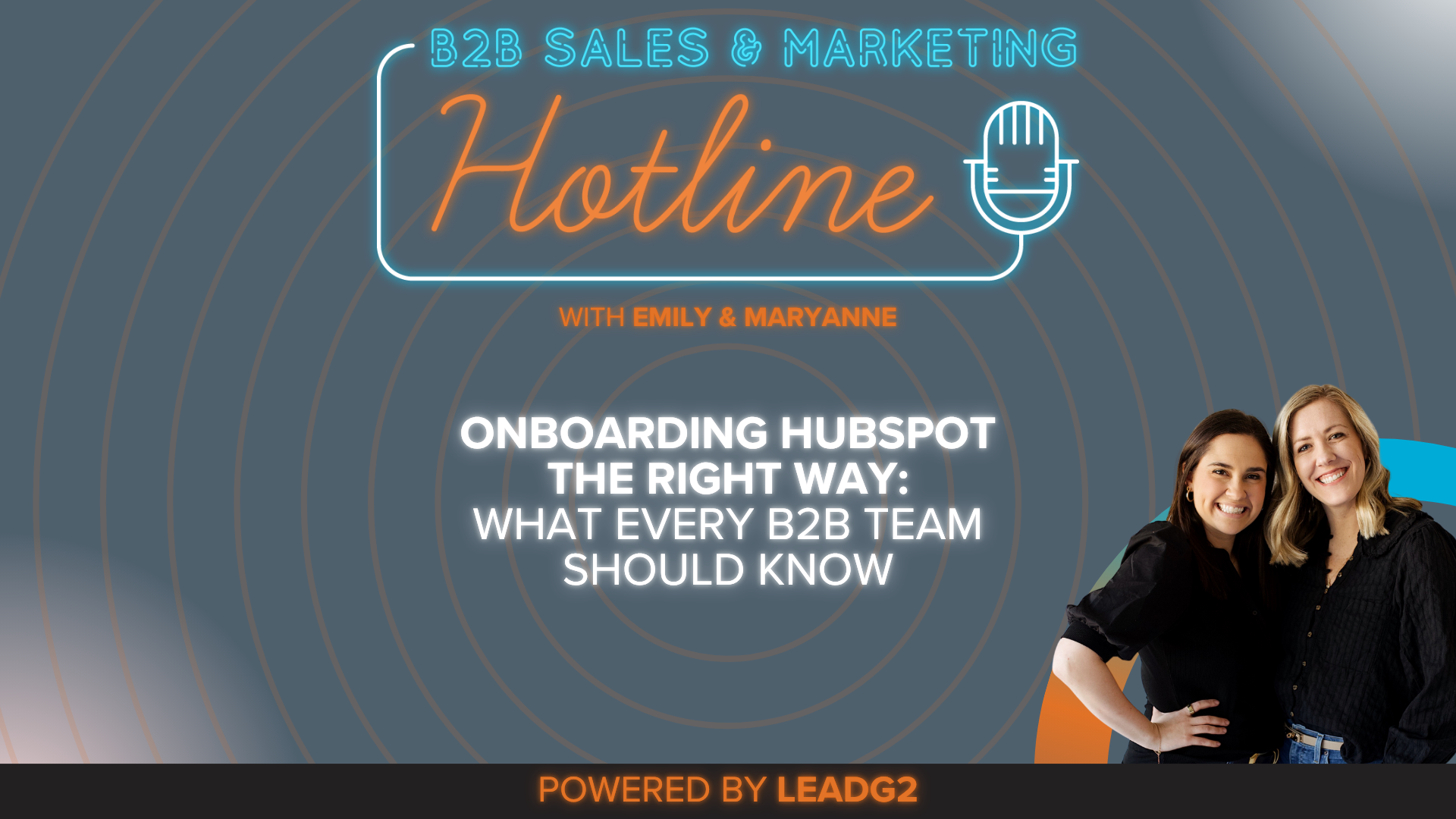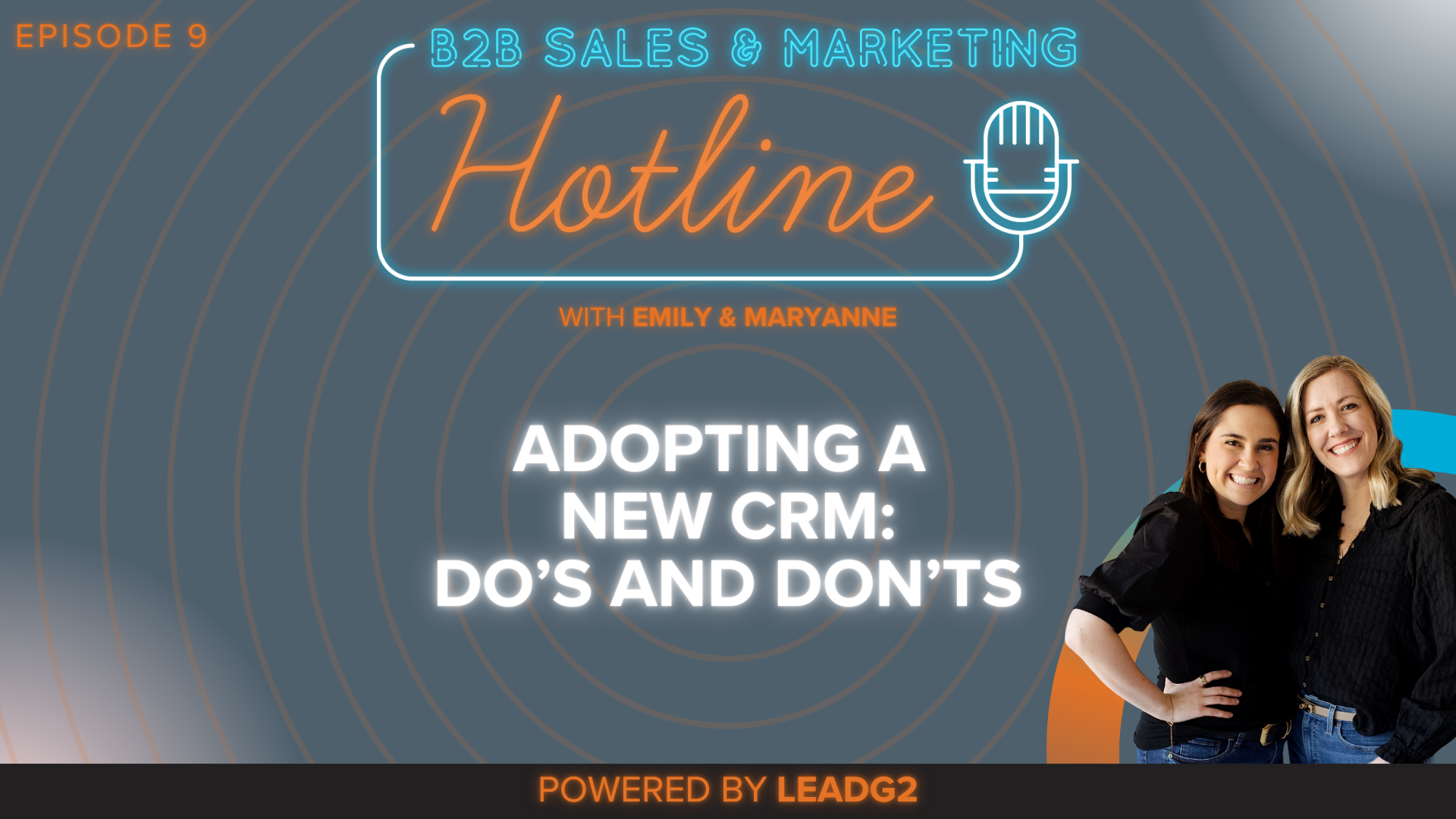2 min read
HubSpot Reporting Hacks: Here's What Should Be on Your Dashboard
 Brent Tripp
:
April 24, 2025
Brent Tripp
:
April 24, 2025


In this episode of The B2B Sales & Marketing Hotline, Maryanne and Emily dive into the often-overlooked powerhouse of your CRM: reporting and dashboards. From avoiding common mistakes to building dashboards that actually drive action, this episode is packed with practical guidance for sales and marketing leaders.
Together, Maryanne and Emily break down:
- The difference between HubSpot’s pre-built and custom reports (and when to use each)
- How to build dashboards that answer real business questions and support team accountability
- Pro tips for designing leadership, sales, and marketing dashboards that fuel performance and simplify one-on-ones
Pre-Built vs. Custom Reports: Start With What You Need
HubSpot offers thousands of pre-built reports that can be dropped into dashboards with just a few clicks. These are great for quick setup and can cover most use cases. But when you need deeper visibility or unique metrics, custom reports are your friend—as long as you know what you’re doing. Emily and Maryanne advise that, unless you're working with a partner (like LeadG2) or know the reporting tool well, stick with pre-builts until a specific need arises.
Like they say in the episode, "Don't build custom reports just because you can. Build them because you need to answer a specific question."
Build Dashboards Backwards: Start With the Questions
One of the most valuable tips from the episode? Don’t drag and drop reports just because they “look cool.” Instead, start by identifying the key questions you want answered every day or week. Then, work backward to find or create the reports that deliver those answers.
This approach ensures that every report on your dashboard provides value and supports real decision-making.
The Must-Have Dashboards
Emily and Maryanne outline several staple dashboards that every business should consider:
-
Sales Leadership Dashboard: Track team performance, proposals, and progress to goal.
-
Individual Seller Dashboards: Let reps see where they stand, what’s expected, and what they’ve accomplished.
-
Marketing Dashboard: Monitor campaign performance, email engagement, lead generation, and more.
-
Data Hygiene Dashboard: Identify contacts missing key fields, deals left untouched, and general CRM cleanliness.
-
KPI Dashboards: Track monthly and long-term performance across departments.
They also talk about creative dashboards such as one-on-one dashboards that guide meetings between sales leaders and their team members, using filtered views to personalize conversations.
Actionable Dashboards Drive Results
Reporting should be more than just a retrospective. When done right, it fuels accountability, coaching, and forecasting. For example:
-
Sales managers can use dashboards in one-on-ones to surface stuck deals, long pipeline stages, or inactive accounts.
-
Goal dashboards can visualize individual or team progress with gauges, bar charts, or other visuals to track daily performance.
Emily emphasizes the importance of making sure data is clean and complete: HubSpot isn’t a mind reader. Reports are only as good as the data being entered.
Reporting Quick Wins
If you’re feeling overwhelmed, start small. Emily and Maryanne recommend identifying your three most-used reports and simply dropping them into a dashboard for easy access.
Then, begin asking: What questions do I wish I could answer quickly?
That’s where the reporting magic starts.
Final Thoughts
When it comes to reporting, more isn’t always better.
Dashboards overloaded with data can create confusion instead of clarity, especially if they’re not designed with purpose. The best dashboards are built around the real questions you need answered and the decisions you need to make. As Emily put it best: “If a report doesn’t tell you something new or help you take action, it doesn’t belong on your dashboard.”
Focus on building reporting tools that spark conversations, drive accountability, and move your business forward.
.png?width=2250&height=647&name=LeadG2-logo_(2).png)


